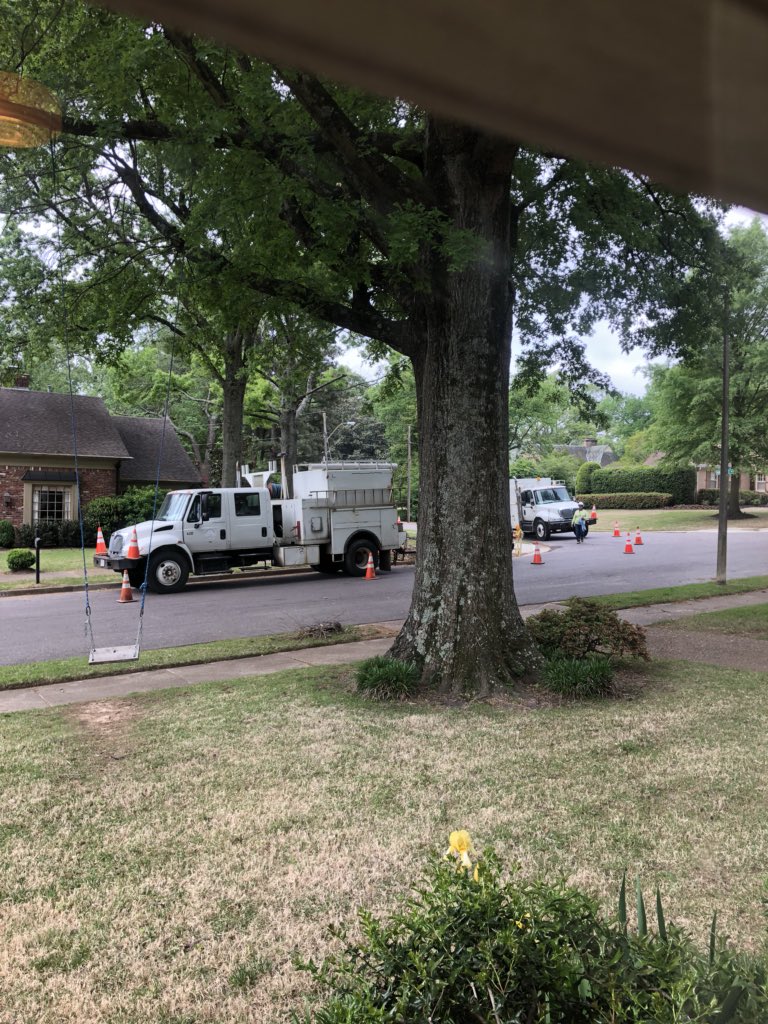Power outages can be inconvenient and disruptive, but tools like the MLGW outage map provide essential updates and empower residents to stay informed. Whether you're dealing with a sudden power loss or planning for potential disruptions, understanding how to use the MLGW outage map can make a significant difference in your preparedness. This guide will walk you through everything you need to know about MLGW outage maps and how they can help you manage power outages effectively.
As part of its commitment to delivering reliable services, Memphis Light, Gas and Water (MLGW) offers a user-friendly outage map that allows customers to monitor power outages in real-time. This tool is designed to provide critical information about the location, duration, and estimated restoration times of outages, ensuring that residents remain updated during unexpected disruptions.
In this article, we'll explore the functionality of the MLGW outage map, its benefits, and how it aligns with MLGW's broader commitment to customer satisfaction. By the end, you'll have a clear understanding of how to leverage this tool to enhance your preparedness during power outages.
Read also:Sydney Sweeney Feet A Comprehensive Look At The Rising Stars Journey
Table of Contents
- What is MLGW Outage Map?
- Benefits of Using MLGW Outage Map
- How to Use MLGW Outage Map
- Real-Time Updates: Key Feature of MLGW Outage Map
- MLGW Outage Statistics and Trends
- Frequently Asked Questions About MLGW Outage Map
- Comparison with Other Outage Maps
- Tips for Staying Prepared During Outages
- Community Support During Power Outages
- Conclusion and Call to Action
What is MLGW Outage Map?
The MLGW outage map is an interactive digital platform designed to provide real-time updates on power outages across the MLGW service area. This map is an essential tool for residents of Memphis and surrounding areas who rely on MLGW for their electricity needs. It allows users to track the status of outages, locate affected areas, and receive updates on restoration efforts.
Key Features of MLGW Outage Map
- Real-time outage information
- Interactive map with zoom functionality
- Estimated time of restoration (ETR)
- Notifications and alerts for specific locations
By leveraging advanced technology, the MLGW outage map ensures that customers are always in the loop regarding power disruptions in their area. This tool plays a crucial role in enhancing transparency and communication between MLGW and its customers.
Benefits of Using MLGW Outage Map
Using the MLGW outage map offers several advantages that make it an invaluable resource for residents. Here are some of the key benefits:
1. Improved Preparedness
Knowing the status of power outages in your area allows you to prepare accordingly. Whether it's stocking up on supplies or making alternative arrangements, the MLGW outage map helps you stay one step ahead.
2. Enhanced Communication
The map serves as a direct line of communication between MLGW and its customers. It ensures that important updates are delivered promptly and accurately.
3. Accessibility
Available online and via mobile devices, the MLGW outage map is accessible from anywhere, making it convenient for users to stay informed on the go.
Read also:Comprehensive Guide To Mlgw Outage Map Your Essential Tool For Power Outage Updates
How to Use MLGW Outage Map
Using the MLGW outage map is simple and straightforward. Follow these steps to get started:
- Visit the official MLGW website and navigate to the outage map section.
- Enter your address or use the default map view to locate your area.
- Zoom in or out to explore different parts of the service area.
- Check the status of outages and estimated restoration times for affected areas.
With its intuitive interface, the MLGW outage map ensures that users of all technical skill levels can access and utilize its features effectively.
Real-Time Updates: Key Feature of MLGW Outage Map
One of the standout features of the MLGW outage map is its ability to provide real-time updates. This means that as soon as an outage occurs, the map reflects the change almost instantly. This level of immediacy is crucial for ensuring that customers receive the most up-to-date information possible.
Why Real-Time Updates Matter
Real-time updates allow residents to make informed decisions during power outages. For example, if an outage is expected to last several hours, you might choose to relocate temporarily or take additional precautions to protect your property.
MLGW Outage Statistics and Trends
Understanding outage patterns and trends can help MLGW improve its services and customers better prepare for potential disruptions. According to MLGW's annual reports, the average duration of outages has decreased significantly over the past few years due to improved infrastructure and response protocols.
Data Source: MLGW Annual Performance Report, 2022
Key Statistics
- Average outage duration: 45 minutes
- Total number of outages in 2022: 12,000
- Restoration success rate: 98%
Frequently Asked Questions About MLGW Outage Map
Here are some common questions users have about the MLGW outage map:
1. How Accurate is the Estimated Time of Restoration?
While the ETR is based on current conditions and historical data, unforeseen circumstances such as severe weather or equipment failures can affect restoration times. MLGW continuously monitors these factors to provide the most accurate estimates possible.
2. Can I Receive Alerts for Specific Areas?
Yes, the MLGW outage map allows users to set up notifications for specific locations. This feature ensures that you receive updates tailored to your needs.
Comparison with Other Outage Maps
While several outage maps are available, the MLGW outage map stands out due to its integration with MLGW's systems and its focus on the specific needs of Memphis residents. Unlike generic outage maps, MLGW's tool provides detailed information about its service area, ensuring that users receive accurate and relevant updates.
Key Differences
- Customized for MLGW service area
- Direct access to MLGW customer support
- Integration with MLGW's outage management system
Tips for Staying Prepared During Outages
While the MLGW outage map is a powerful tool, it's also important to take proactive steps to prepare for power outages. Here are some tips:
1. Create an Emergency Kit
Include essentials such as flashlights, batteries, non-perishable food, and bottled water in your emergency kit.
2. Invest in Backup Power Solutions
Consider purchasing a portable generator or uninterruptible power supply (UPS) for critical devices.
3. Stay Informed
Regularly check the MLGW outage map and sign up for alerts to stay updated on the status of outages in your area.
Community Support During Power Outages
During extended outages, community support becomes crucial. Neighbors can come together to share resources, provide assistance, and offer emotional support. Local organizations and MLGW often collaborate to ensure that vulnerable populations, such as the elderly and disabled, receive the help they need.
How You Can Help
- Check on elderly or disabled neighbors
- Share updates from the MLGW outage map with your community
- Organize community gatherings to maintain morale
Conclusion and Call to Action
In conclusion, the MLGW outage map is an indispensable tool for managing power outages in Memphis and surrounding areas. Its real-time updates, interactive features, and integration with MLGW's systems make it a reliable source of information for residents. By using this tool effectively and preparing for potential disruptions, you can minimize the impact of power outages on your daily life.
We encourage you to explore the MLGW outage map and share your experiences with others. Your feedback can help improve the tool and ensure that it continues to meet the needs of MLGW customers. Don't forget to bookmark this article for future reference and consider leaving a comment below with your thoughts or questions.
For more insights into MLGW services and tools, explore our other articles and resources. Stay informed, stay prepared, and let the MLGW outage map be your trusted companion during power outages.


